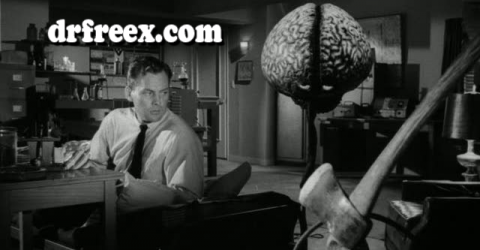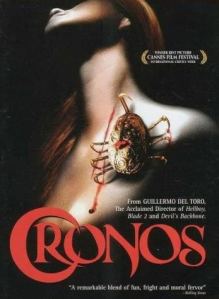Finally finishing out Letterboxd.com’s March Movie Madness challenge. It got to be a little wearing there, toward the end.
The Villain (1979)
 Dear sweet mercy, is there anything worse than an unfunny comedy? This is stuntman extraordinaire Hal Needham’s third movie, after Smoky and the Bandit and Hooper. It is a Western parody, and if you are expecting Blazing Saddles, you are probably in the same shoes as everyone who paid to see this in theaters, sucked in by an ad campaign and a trailer with far better pacing and editing than the movie itself. Cactus Jack Slade, a down-on-his-luck professional bad guy (Kirk Douglas, of all people) is hired by crooked banker Avery Simpson (Jack Elam) to waylay the somewhat less-than-virginal Charming Jones (Ann-Margaret) on the way back to her pa’s silver mine and steal the money she’s transporting so Simpson can foreclose on the mine. Trouble is, she is being protected by a clueless lunkhead literally named Handsome Stranger (Arnold freaking Schwarzenegger). The other problem is that Cactus Jack is an idiot.
Dear sweet mercy, is there anything worse than an unfunny comedy? This is stuntman extraordinaire Hal Needham’s third movie, after Smoky and the Bandit and Hooper. It is a Western parody, and if you are expecting Blazing Saddles, you are probably in the same shoes as everyone who paid to see this in theaters, sucked in by an ad campaign and a trailer with far better pacing and editing than the movie itself. Cactus Jack Slade, a down-on-his-luck professional bad guy (Kirk Douglas, of all people) is hired by crooked banker Avery Simpson (Jack Elam) to waylay the somewhat less-than-virginal Charming Jones (Ann-Margaret) on the way back to her pa’s silver mine and steal the money she’s transporting so Simpson can foreclose on the mine. Trouble is, she is being protected by a clueless lunkhead literally named Handsome Stranger (Arnold freaking Schwarzenegger). The other problem is that Cactus Jack is an idiot.  No, the real problem is that the decision was made to make this a live action Roadrunner movie, with Kirk Douglas in the Wile E. Coyote role. They even do the painting-a-tunnel-on-the-side-of-the-mountain bit, for God’s sake. The problem is, neither Hal Needham nor his editor are Chuck Jones, and all the bits fall flat, flat flat. Kirk Douglas has good comic timing, and is game as hell, but the Marx Brothers, Monty Python and full frontal nudity could not have saved this movie. I haven’t even gotten into Paul Lynde and Robert Tessier as Indians. Nor will I.
No, the real problem is that the decision was made to make this a live action Roadrunner movie, with Kirk Douglas in the Wile E. Coyote role. They even do the painting-a-tunnel-on-the-side-of-the-mountain bit, for God’s sake. The problem is, neither Hal Needham nor his editor are Chuck Jones, and all the bits fall flat, flat flat. Kirk Douglas has good comic timing, and is game as hell, but the Marx Brothers, Monty Python and full frontal nudity could not have saved this movie. I haven’t even gotten into Paul Lynde and Robert Tessier as Indians. Nor will I.
White Vengeance (2011)
 This is the second Chinese historical epic I’ve seen in the last couple of years that had the original title The Feast, that has been changed to something more commercial for Western audiences. the first, an Asian “Hamlet”, was re-titled Legend of the Black Scorpion, which is a bit odd for a movie bereft of scorpions of any color. The re-titling of this one makes more sense, at least. White Vengeance tells the tale of Liu Bang (Leon Lai) and Xiang Yu (Feng Shaofeng), two warlords seeking to overthrow the crumbling Qin dynasty and become Emperor themselves; seeking to drive a wedge between the two men, King Huai proclaims that whoever takes over a certain town will become its Lord, a stepping stone to the Imperial Throne. It works, and Liu Bang manages the feat without shedding a single drop of blood; thus begins an internecine war between the two men, fought with armies, yes, but mostly through the machinations of each man’s counselor.
This is the second Chinese historical epic I’ve seen in the last couple of years that had the original title The Feast, that has been changed to something more commercial for Western audiences. the first, an Asian “Hamlet”, was re-titled Legend of the Black Scorpion, which is a bit odd for a movie bereft of scorpions of any color. The re-titling of this one makes more sense, at least. White Vengeance tells the tale of Liu Bang (Leon Lai) and Xiang Yu (Feng Shaofeng), two warlords seeking to overthrow the crumbling Qin dynasty and become Emperor themselves; seeking to drive a wedge between the two men, King Huai proclaims that whoever takes over a certain town will become its Lord, a stepping stone to the Imperial Throne. It works, and Liu Bang manages the feat without shedding a single drop of blood; thus begins an internecine war between the two men, fought with armies, yes, but mostly through the machinations of each man’s counselor.  The battle of wits seems to come to a head at the Feast of Hong Gate, where Xiang Yu’s elderly, blind mentor Fan Zeng (Anthony Wong) and Liu Bang’s right hand man Zhang Liang (Zhang Hanyu) play five games of chess simultaneously. Well, not chess, but Go, a Chinese version that has subtleties of its own. Though it seems to end with Xiang triumphant, the chess moves continue for months, even beyond Fan’s eventual death. That’s the White Vengeance of the title: the white pieces on the Go board, vying for advantage even when there are no hands to move them. White Vengeance does have massive armies charging at each other, and those scenes are well done; but I do admit I love movies that value strategizing and the movement behind the lines. There’s also a love story almost buried within the cut and thrust of the main storyline, and it seems superfluous – though it does add a bit of sweet and forlorn spice to the otherwise Machiavellian mix.
The battle of wits seems to come to a head at the Feast of Hong Gate, where Xiang Yu’s elderly, blind mentor Fan Zeng (Anthony Wong) and Liu Bang’s right hand man Zhang Liang (Zhang Hanyu) play five games of chess simultaneously. Well, not chess, but Go, a Chinese version that has subtleties of its own. Though it seems to end with Xiang triumphant, the chess moves continue for months, even beyond Fan’s eventual death. That’s the White Vengeance of the title: the white pieces on the Go board, vying for advantage even when there are no hands to move them. White Vengeance does have massive armies charging at each other, and those scenes are well done; but I do admit I love movies that value strategizing and the movement behind the lines. There’s also a love story almost buried within the cut and thrust of the main storyline, and it seems superfluous – though it does add a bit of sweet and forlorn spice to the otherwise Machiavellian mix.
X-Men: First Class (2011)
 Why did it take me so long to see this movie? Well, I guess I knew that some day I would need a movie starting with X that I hadn’t seen before. This is the oddest Franchise reboot in a while; most reboots update the characters, not backdate them. This one places the X-Men at the Cuban Missile Crisis, which wasn’t the fault of the Soviets, but that nasty old Kevin Bacon, here playing Sebastian Shaw, a character that didn’t actually crop up until the late 70s. First Class gets pretty cavalier about which characters it wants to play with, and schizophrenically taking pains to explain why Mystique is so young-looking in the 21st century X-Men movies, while blithely ignoring any other number of continuity problems.
Why did it take me so long to see this movie? Well, I guess I knew that some day I would need a movie starting with X that I hadn’t seen before. This is the oddest Franchise reboot in a while; most reboots update the characters, not backdate them. This one places the X-Men at the Cuban Missile Crisis, which wasn’t the fault of the Soviets, but that nasty old Kevin Bacon, here playing Sebastian Shaw, a character that didn’t actually crop up until the late 70s. First Class gets pretty cavalier about which characters it wants to play with, and schizophrenically taking pains to explain why Mystique is so young-looking in the 21st century X-Men movies, while blithely ignoring any other number of continuity problems.  In all, this is a pretty necessary move if you want to maintain the backstory of Magneto as a survivor of the Nazi Holocaust. The graying of their mainstay characters is the problem Marvel and DC have been having for years with characters like Nick Fury – most notably not with the Howling Commandos in the Captain America movie. Sgt. Rock was still kicking around the civilian world in the 70s – that’s realistic enough – but DC would like us to forget that Bruce Wayne ran into Rock back during WWII, behind enemy lines. And I guess since they recently slash-and-burned their entire heritage, they can now legitimately say that never happened. Bitter, me? Nah. I have the trade paperbacks. Anyway, fun movie. Not going to be in my top ten, but a good superhero movie.
In all, this is a pretty necessary move if you want to maintain the backstory of Magneto as a survivor of the Nazi Holocaust. The graying of their mainstay characters is the problem Marvel and DC have been having for years with characters like Nick Fury – most notably not with the Howling Commandos in the Captain America movie. Sgt. Rock was still kicking around the civilian world in the 70s – that’s realistic enough – but DC would like us to forget that Bruce Wayne ran into Rock back during WWII, behind enemy lines. And I guess since they recently slash-and-burned their entire heritage, they can now legitimately say that never happened. Bitter, me? Nah. I have the trade paperbacks. Anyway, fun movie. Not going to be in my top ten, but a good superhero movie.
yellowbrickroad (2010)
 I wonder if I would have ever settled down to watch this were it not for March Movie Madness? Possibly not. I found it on Netflix while looking for a movie beginning with Y, and here we are. The setup is this: in 1940, the entire population of Friar, New Hampshire, headed down a mountain trail. Some were found frozen to death. Some had been savagely slaughtered. But most were simply never seen again. One of the few survivors could only keep asking, “Can’t you hear it?” A husband and wife team, hoping to write a book on the subject, have spent years trying to get the official documents so they can retrace the town’s journey. Finally succeeding, they embark with a psychiatrist, a wilderness expert, a husband-and-wife cartography team, an intern, and a girl from present-day Friar, who has to show them where the path begins: a stone marker with the words “yellowbrickroad”. Well, before you can say Blair Witch Project (though this isn’t a found footage movie, I should add), our party is subjected to whirling compasses, a GPS that says they’re in every country in the world except where they are, and music constantly playing in the distance. When even shooting the stars with a sextant proves useless, all they can do is follow the music, while their sanity slowly unravels, and it’s not too long before the first murder happens.
I wonder if I would have ever settled down to watch this were it not for March Movie Madness? Possibly not. I found it on Netflix while looking for a movie beginning with Y, and here we are. The setup is this: in 1940, the entire population of Friar, New Hampshire, headed down a mountain trail. Some were found frozen to death. Some had been savagely slaughtered. But most were simply never seen again. One of the few survivors could only keep asking, “Can’t you hear it?” A husband and wife team, hoping to write a book on the subject, have spent years trying to get the official documents so they can retrace the town’s journey. Finally succeeding, they embark with a psychiatrist, a wilderness expert, a husband-and-wife cartography team, an intern, and a girl from present-day Friar, who has to show them where the path begins: a stone marker with the words “yellowbrickroad”. Well, before you can say Blair Witch Project (though this isn’t a found footage movie, I should add), our party is subjected to whirling compasses, a GPS that says they’re in every country in the world except where they are, and music constantly playing in the distance. When even shooting the stars with a sextant proves useless, all they can do is follow the music, while their sanity slowly unravels, and it’s not too long before the first murder happens.  The padding’s at a minimum (though still unfortunately there), and you have to admit we know these people before they meet their various ends. The slow burn material makes me think of Ty West. But that doesn’t necessarily mean that we like or identify with them, which may be the movie’s greatest weakness. The other weakness is the ending. A lot of people hate the ending, but I’m not necessarily one of them. It turns out this is a problem I have with a lot of modern horror fiction; there’s a superb amount of dread built up, and there isn’t a satisfactory conclusion, so you go obscure, you go strange, and leave it at that. Though the ending of yellowbrickroad is disappointing as to the reveal of the end of the trail, the imagery it ends with is horrific enough that I was satisfied. Your mileage may vary.
The padding’s at a minimum (though still unfortunately there), and you have to admit we know these people before they meet their various ends. The slow burn material makes me think of Ty West. But that doesn’t necessarily mean that we like or identify with them, which may be the movie’s greatest weakness. The other weakness is the ending. A lot of people hate the ending, but I’m not necessarily one of them. It turns out this is a problem I have with a lot of modern horror fiction; there’s a superb amount of dread built up, and there isn’t a satisfactory conclusion, so you go obscure, you go strange, and leave it at that. Though the ending of yellowbrickroad is disappointing as to the reveal of the end of the trail, the imagery it ends with is horrific enough that I was satisfied. Your mileage may vary.
Zodiac (2007)
 Been meaning to watch this forever. I was stymied when the used DVD I bought was a full-screen edition (“What is this? Medieval times?“), which I finally replaced, and I needed the Z flick anyway, and I had already watched Z. Zodiac is about the Zodiac Killer, a serial murderer whose identity and exact body count is still a cause for conjecture (though the movie, and the book it’s based on, settles on a fairly good suspect). The actual murders take up a rather small portion of the runtime; most of it is given over to the investigation by police inspectors (Mark Ruffalo and Anthony Edwards) and newspapermen (Robert Downey Jr. and Jake Gyllenhaal). Oh, and I nearly forgot Brian Cox as Melvin Belli. Hope you like procedurals, because there’s a lot of it in the 157 minutes.
Been meaning to watch this forever. I was stymied when the used DVD I bought was a full-screen edition (“What is this? Medieval times?“), which I finally replaced, and I needed the Z flick anyway, and I had already watched Z. Zodiac is about the Zodiac Killer, a serial murderer whose identity and exact body count is still a cause for conjecture (though the movie, and the book it’s based on, settles on a fairly good suspect). The actual murders take up a rather small portion of the runtime; most of it is given over to the investigation by police inspectors (Mark Ruffalo and Anthony Edwards) and newspapermen (Robert Downey Jr. and Jake Gyllenhaal). Oh, and I nearly forgot Brian Cox as Melvin Belli. Hope you like procedurals, because there’s a lot of it in the 157 minutes.  That’s a damned fine cast, though, and David Fincher and his crew do a spectacular job of re-creating 60s through late 70s San Francisco. The character count does start getting unwieldy as more and more police departments are brought into the investigation, but that really does help the viewer understand the complicated nature of police work, and how frustrated the detectives working the case become, not to mention a public on the verge of hysteria. No wonder Dirty Harry became a hit using the thinly-disguised Scorpio as the villain. I was wondering how they were going to fill out that running time when there is no climactic chase or cathartic capture; the movie instead zeros in on how the pursuit of Zodiac comes close to destroying the lives of these men. There was, at least a cathartic moment for me toward the end, when a rack of paperbacks at a airport revealed that yes, the book that was being written during the movie was the one I read in 1986. Also, if you’re a Donovan fan, be aware that this movie will spoil “Hurdy Gurdy Man” for you forever.
That’s a damned fine cast, though, and David Fincher and his crew do a spectacular job of re-creating 60s through late 70s San Francisco. The character count does start getting unwieldy as more and more police departments are brought into the investigation, but that really does help the viewer understand the complicated nature of police work, and how frustrated the detectives working the case become, not to mention a public on the verge of hysteria. No wonder Dirty Harry became a hit using the thinly-disguised Scorpio as the villain. I was wondering how they were going to fill out that running time when there is no climactic chase or cathartic capture; the movie instead zeros in on how the pursuit of Zodiac comes close to destroying the lives of these men. There was, at least a cathartic moment for me toward the end, when a rack of paperbacks at a airport revealed that yes, the book that was being written during the movie was the one I read in 1986. Also, if you’re a Donovan fan, be aware that this movie will spoil “Hurdy Gurdy Man” for you forever.
Conclusion
Well, that was fun, but as I mentioned earlier, getting to be a grind toward the end. In the week before the Challenge ended, The Hobbit and Zero Dark Thirty both hit the stores. I would have loved to watch The Hobbit again, but no, I had the end of the alphabet to contend with. Still, I stuck it out, but now I have a bit of a problem getting excited about watching a movie again – this was too much of a good thing. I need to get over this because there’s a Crapfest tomorrow, and maybe that’s just what I need – too much of a bad thing.



















































